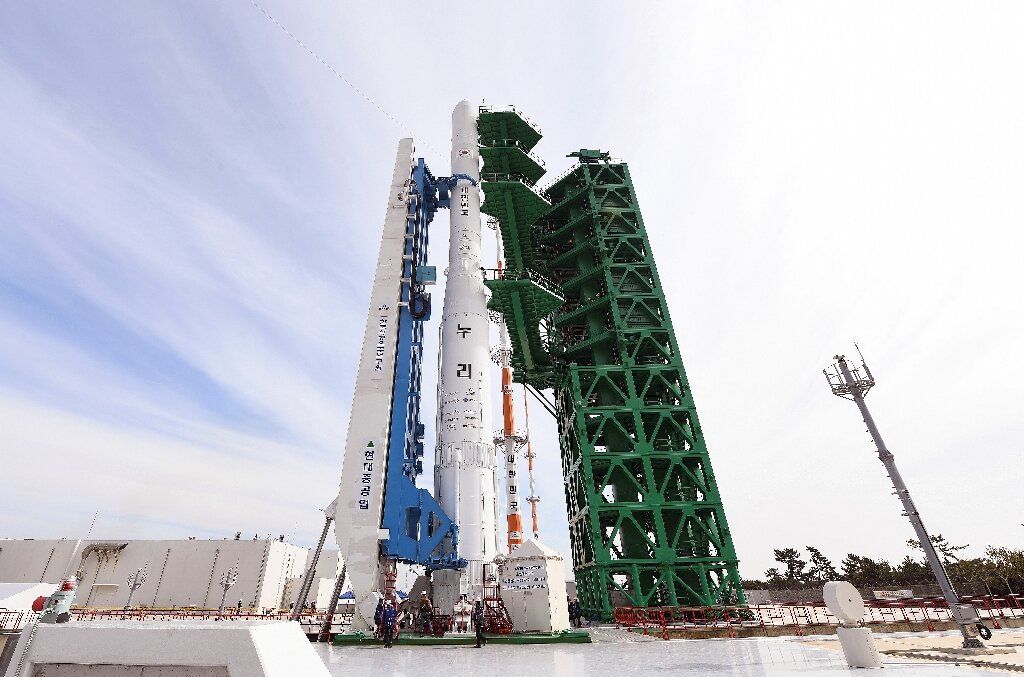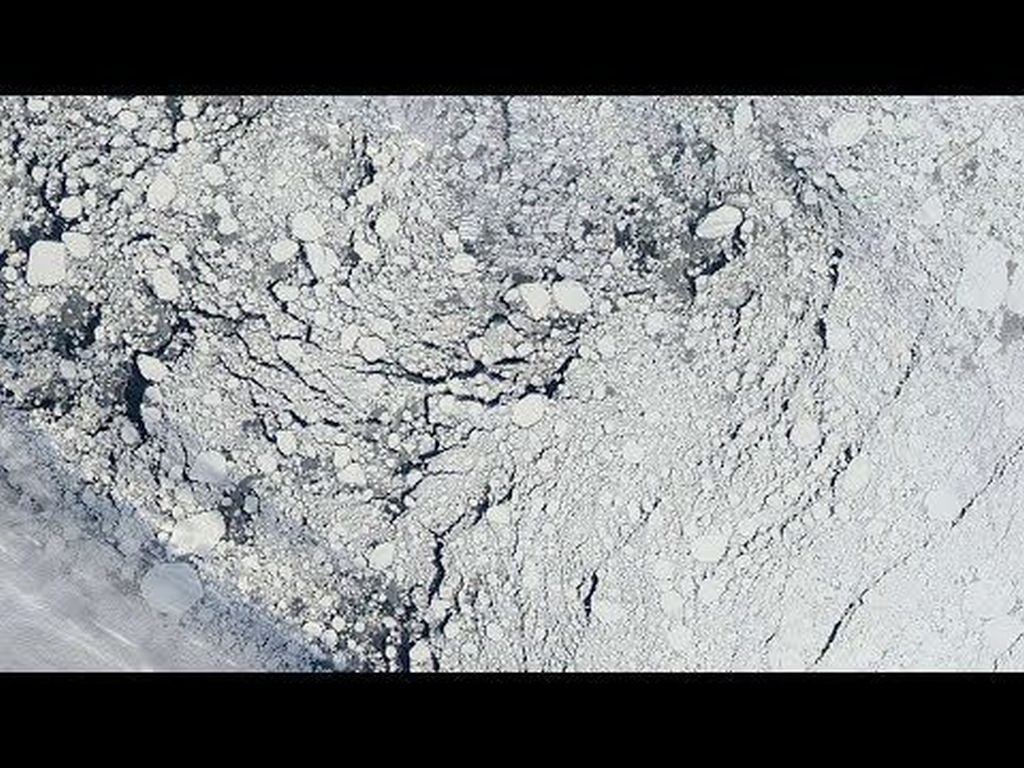Methane is one of the most important greenhouse gases, despite the overwhelming interest in carbon dioxide emissions as the primary source of climate change. It is hard to track, though, as its sources can range from leaking chemical and gas pipelines to literal farm fields. Now an energy analytics company has a system they believe can track otherwise undocumented methane emissions in a way that could prove helpful in eliminating them altogether.
Continue reading “Satellites can now see Exactly Where Methane is Being Dumped Into the Atmosphere”South Korea Launches its First Rocket. The Third Stage cut off Short.
So far, only six countries have successfully launched more than 1 ton of equipment into space using domestically developed rockets. A seventh, North Korea, has successfully done so with a slightly smaller payload. Recently, their southern neighbor attempted to get into this exclusive club by testing its first-ever three-stage orbital rocket.
Continue reading “South Korea Launches its First Rocket. The Third Stage cut off Short.”It’ll Soon be Possible to Make Satellite Phone Calls With Your Regular Phone
Not all who wander are lost – but sometimes their cell phone reception is. That might change soon if a plan to project basic cell phone coverage to all parts of the globe comes to fruition. Lynk has already proven it can use a typical smartphone to bound a standard SMS text message off a low-earth-orbiting satellite, and they don’t plan to stop there.
Continue reading “It’ll Soon be Possible to Make Satellite Phone Calls With Your Regular Phone”A Television Satellite Might be About to Explode
On Friday (Jan. 19th), authorities at the Federal Communications Commission (FCC) announced that they had granted permission to cable tv provider DirecTV to begin the process of deorbiting their Spaceway-1 (F1) satellite. This was necessary ever since DirecTV detected a “major anomaly” with the satellite’s batteries which increased the risk of an explosion if its orbit remained unchanged.
Continue reading “A Television Satellite Might be About to Explode”You’ve Got to Watch this Stunning NASA Video of Arctic Sea Ice. Now at its Lowest Levels
Arctic sea ice is getting thinner and younger. Satellite data and sonar records from submarines show how the ice coverage in the north is getting more and more seasonal. In the past, ice would build up year over year, getting thicker and stronger. But seasonal ice disappears each summer, meaning more open ocean in the summer, and less of the Sun’s energy being reflected back into space.
Tiangong 1 Falls, Blue Moon Rises and Mars Takes Aim At Saturn

I apologize for the end-of-the-world title, but everything in it is true. And the world will still be here after it’s all done. On Friday (March 31) at 7:36 a.m. Central Time, the Moon will be full for the second time this month, which makes it a Blue Moon according to popular usage. Enjoy it. What with January’s Blue Moon and now this, we’ve chewed through all our Blue Moons till Halloween 2020.
I look forward to every full moon. Watching a moonrise, we get to see all manner of amazing atmospheric distortions play across the squat, orange disk. Once the sky’s dark, its outpouring of light makes walking at night a pleasure.
When a full moon occurs in spring, it hurries south down the ecliptic, the imaginary circle in the sky defining Earth’s orbit around the Sun. For northern hemisphere skywatchers, this southward sprint delays its rising by more an hour each night, forcing a quick departure from the evening sky. And that means blessed darkness for hunting down favorite galaxies and star clusters.
Tiangong 1 and a reentry simulation
As the Moon rolls along, the hapless Chinese space station Tiangong 1 hurtles toward Earth. Drag caused by friction with the upper atmosphere continues to shrink the spacecraft’s orbit, bringing it closer and closer to inevitable breakup and incineration. Since the Chinese National Space Administration (CNSA) lost touch with Tiangong 1 in March 2016, mission control can no longer power thrusters to de-orbit it at chosen time over a safe location like the ocean. The 9.3-ton (8,500 kg) station will burn up somewhere anywhere over a vast swath of the planet between latitudes 43°N and 43°S. Included within this zone are the southern half of Europe, the southern two-thirds of the U.S., India, Australia and much of Africa and South America.
Not until the day of or even hours before will have a clear idea of when and where the station will meet its fate. According to the latest update from the Aerospace Corp., which monitors falling spacecraft, reentry is expected on Easter Sunday (April 1) at 10:30 UT / 5:30 a.m. Central Time plus or minus 16 hours. This morning (March 29), the space station is circling Earth at about 118 miles (190 km) altitude. The lowest a satelllite can still make a complete orbit of the planet is about 62 miles (100 km). Below that, break-up begins.

For up-to-the-minute updates on when to expect Tiangong 1’s orbit to decay and the machine to plunge to Earth, check out Joseph Remis’ Twitter page. Most of the space station is expected to burn up on reentry, but larger chunks might survive all the way to the ground. Since much more of the Earth’s surface is water these remnants will likely end up in the drink … but you never know. If Tiangong-1 does come down over a populated area, observers on the ground will witness a spectacular, manmade fireball day or night.

On the quieter side but nearly as eye-catching, Mars will overtake Saturn in the coming week, passing just 1° south of the ringed planet in a thrilling dawn conjunction on April 2. If the weather forecast doesn’t look promising that morning, the two planets will remain within 2° of each other now through April 6th, providing plenty of opportunities for a look.
You can easily tell them apart by color: Mars is distinctly red-orange and Saturn looks creamy white. Both are bright at around magnitude 0 though Mars is now a hair brighter by two-tenths of a magnitude. Will you be able to see the difference?

In most telescopes at low magnification both planets will comfortably fit in the same field of view. Saturn’s rings are tilted nearly wide open and quite beautiful. Mars appears gibbous and though still rather small, it’s brightening rapidly and drawing closer in time for its closest approach to Earth since 2003. Wishing you clear skies!
Russia and China Are Working on Space and Counterspace Weapons

Every year, the Department of National Intelligence (DNI) releases its Worldwide Threat Assessment of the US Intelligence Community. This annual report contains the intelligence community’s assessment of potential threats to US national security and makes recommendations accordingly. In recent years, these threats have included the development and proliferation of weapons, regional wars, economic trends, terrorism, cyberterrorism, etc.
This year’s assessment, which was released on February 8th, 2018, was certainly a mixed bag of warnings. Among the many potential threats to national security, the authors emphasized the many recent developments taking place in space. According to their assessment, the expansion of the global space industry, growing cooperation between the private and public sector, and the growth of various states in space, could constitute a threat to US national security.
Naturally, the two chief actors that are singled out were China and Russia. As they indicate, these countries will be leading the pack in the coming years when it comes to expanding space-based reconnaissance, communications and navigation systems. This will not only enable their abilities (and those of their allies) when it comes to space-based research, but will have military applications as well.
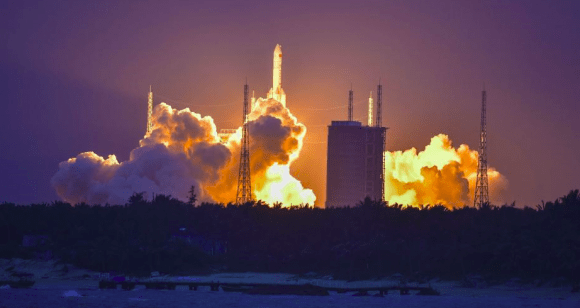
As they state in the section of the report titled “Space and Counhttps://www.dni.gov/files/documents/Newsroom/Testimonies/2018-ATA—Unclassified-SSCI.pdfterspace“:
“Continued global space industry expansion will further extend space-enabled capabilities and space situational awareness to nation-state, nonstate, and commercial space actors in the coming years, enabled by the increased availability of technology, private-sector investment, and growing international partnerships for shared production and operation… All actors will increasingly have access to space-derived information services, such as imagery, weather, communications, and positioning, navigation, and timing for intelligence, military, scientific, or business purposes.”
A key aspect of this development is outlined in the section titled “Emerging and Disruptive Technology,” which addresses everything from the development of AI and internet technologies to additive manufacturing and advanced materials. In short, it not just the development of new rockets and spacecraft that are at issue here, but the benefits brought about by cheaper and lighter materials, more rapid information sharing and production.
“Emerging technology and new applications of existing technology will also allow our adversaries to more readily develop weapon systems that can strike farther, faster, and harder and challenge the United States in all warfare domains, including space,” they write.
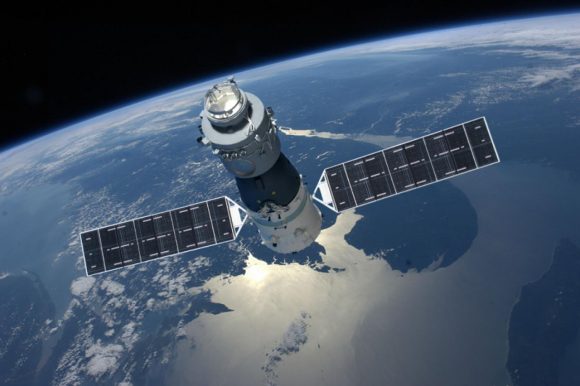
Specifically, anti-satellite (ASAT) weapons are addressed as the major threat. Such technologies, according to the report, have the potential to reduce US and allied military effectiveness by disrupting global communications, navigation and coordination between nations and armies. These technologies could be destructive, in the form of anti-satellite missiles, but also nondestructive – i.e. electromagnetic pulse (EMP) devices. As they indicate:
“We assess that, if a future conflict were to occur involving Russia or China, either country would justify attacks against US and allied satellites as necessary to offset any perceived US military advantage derived from military, civil, or commercial space systems. Military reforms in both countries in the past few years indicate an increased focus on establishing operational forces designed to integrate attacks against space systems and services with military operations in other domains.”
The authors further anticipate that Russian and Chinese destructive ASAT technology could reach operational capacity within a few years time. To this end, they cite recent changes in the People’s Liberation Army (PLA), which include the formation of military units that have training in counter-space operations and the development of ground-launched ASAT missiles.
While they are not certain about Russia’s capability to wage ASAT warfare, they venture that similar developments are taking place. Another area of focus is the development of directed-energy weapons for the purpose of blinding or damaging space-based optical sensors. This technology is similar to what the US investigated decades ago for the sake of strategic missile defense – aka. the Strategic Defense Initiative (SDI).
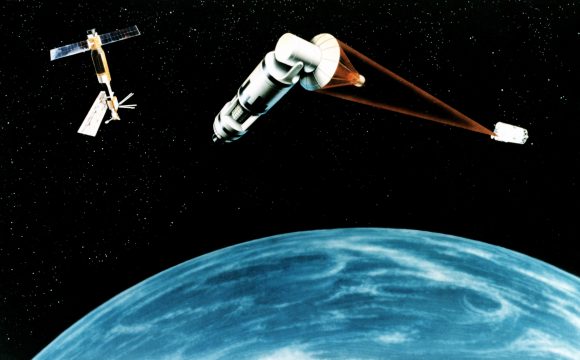
While these weapons would not be used to blow up satellites in the conventional sense, they would be capable of blinding or damaging sensitive space-based optical sensors. On top of that, the report cites how Russia and China continue to conduct on-orbit activities and launching satellites that are deemed “experimental”. A good example of this was a recent proposal made by researchers from the Information and Navigation College at China’s Air Force Engineering University.
The study which detailed their findings called for the deployment of a high-powered pulsed ablative laser that could be used to break up space junk. While the authors admit that such technology can have peaceful applications – ranging from satellite inspection, refueling and repair – they could also be used against other spacecraft. While the United States has been researching the technology for decades, China and Russia’s growing presence in space threatens to tilt this balance of power.
Moreover, there are the loopholes in the existing legal framework – as outlined in the Outer Space Treaty – which the authors believe China and Russia are intent on exploiting:
“Russia and China continue to publicly and diplomatically promote international agreements on the nonweaponization of space and “no first placement” of weapons in space. However, many classes of weapons would not be addressed by such proposals, allowing them to continue their pursuit of space warfare capabilities while publicly maintaining that space must be a peaceful domain.”
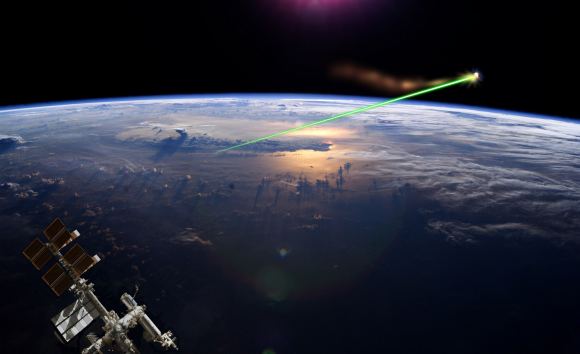
For example, the Outer Space Treaty bars signatories from placing weapons of mass destruction in orbit of Earth, on the Moon, on any other celestial body, or in outer space in general. By definition, this referred to nuclear devices, but does not extend to conventional weapons in orbit. This leaves room for antisatellite platforms or other conventional space-based weapons that could constitute a major threat.
Beyond China and Russia, the report also indicates that Iran’s growing capabilities in rocketry and missile technology could pose a threat down the road. As with the American and Russian space programs, developments in space rocketry and ICBMs are seen as being complimentary to each other:
“Iran’s ballistic missile programs give it the potential to hold targets at risk across the region, and Tehran already has the largest inventory of ballistic missiles in the Middle East. Tehran’s desire to deter the United States might drive it to field an ICBM. Progress on Iran’s space program, such as the launch of the Simorgh SLV in July 2017, could shorten a pathway to an ICBM because space launch vehicles use similar technologies.”
All told, the report makes some rather predictable assessments. Given China and Russia’s growing power in space, it is only natural that the DNI would see this as a potential threat. However, that does not mean that one should assume an alarmist attitude. When it comes to assessing threats, points are awarded for considering every contingency. But if history has taught us anything, it’s that assessment and realization are two very different things.
Remember Sputnik? The lesson there was clear. Don’t panic!
Further Reading: DNI
What are CubeSats?
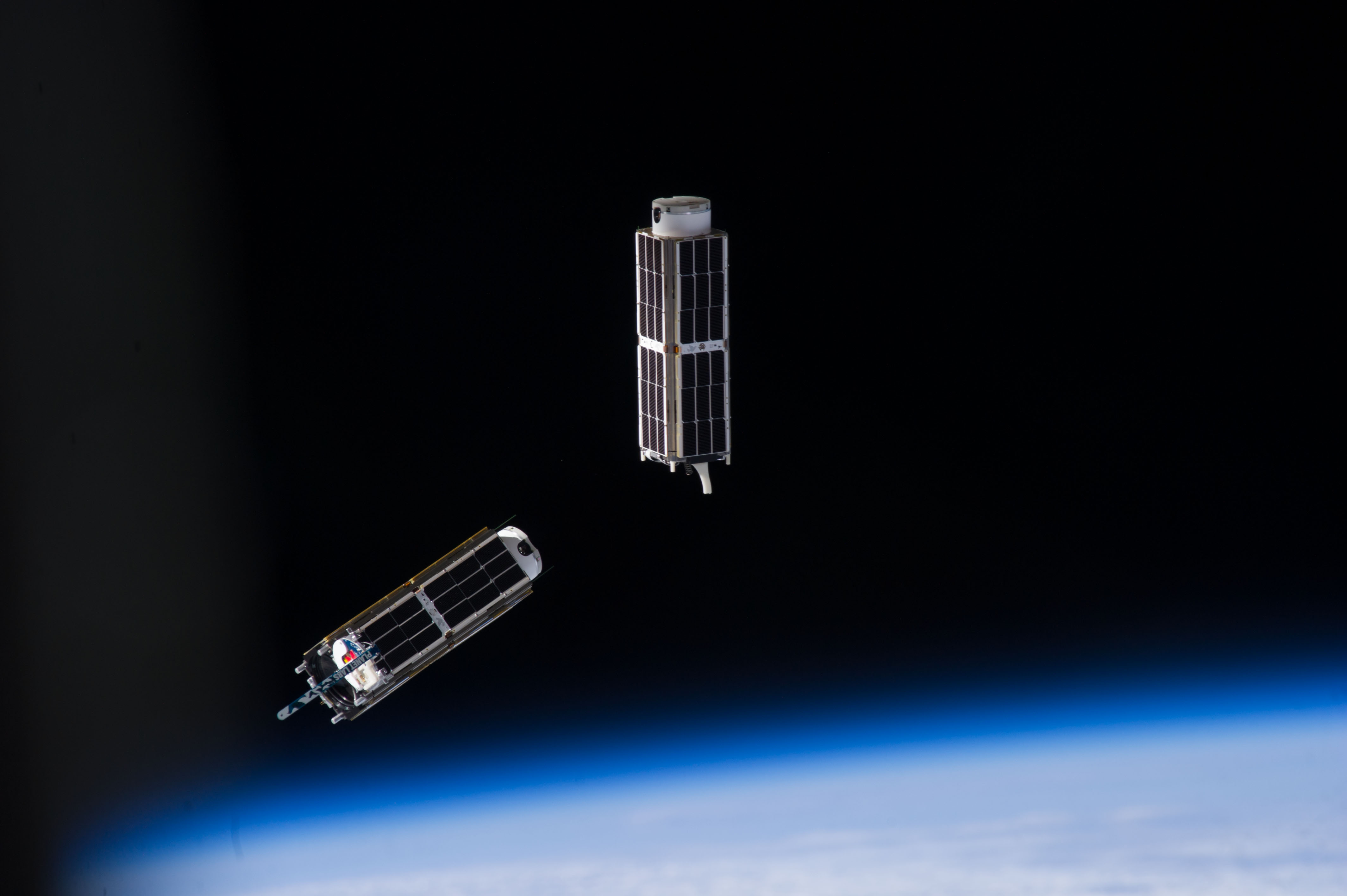
One of the defining characteristics of the modern era of space exploration is the open nature of it. In the past, space was a frontier that was accessible only to two federal space agencies – NASA and the Soviet space program. But thanks to the emergence of new technologies and cost-cutting measures, the private sector is now capable of providing their own launch services.
In addition, academic institutions and small countries are now capable of building their own satellites for the purposes of conducting atmospheric research, making observations of Earth, and testing new space technologies. It’s what is known as the CubeSat, a miniaturized satellite that is allowing for cost-effective space research.
Structure and Design:
Also known as nanosatellites, CubeSats are built to standard dimensions of 10 x 10 x 11 cm (1 U) and are shaped like cubes (hence the name). They are scalable, coming in versions that measure 1U, 2Us, 3Us, or 6Us on a side, and typically weigh less than 1.33 kg (3 lbs) per U. CubSats of 3Us or more are the largest, being composed of three units stacked lengthwise with a cylinder encasing them all.
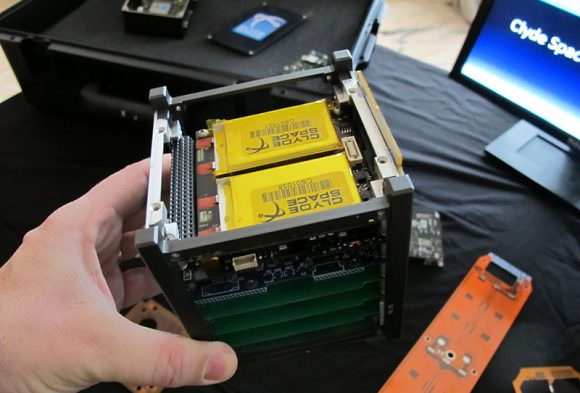
In recent years larger CubeSat platforms have been proposed, which include a 12U model (20 x 20 x 30 cm or 24 x 24 x 36 cm), that would extend the capabilities of CubeSats beyond academic research and testing new technologies, incorporating more complex science and national defense goals.
The main reason for miniaturizing satellites is to reduce the cost of deployment, and because they can be deployed in the excess capacity of a launch vehicle. This reduces the risks associated with missions where additional cargo has to be piggybacked to the launcher, and also allows for cargo changes on short notice.
They can also be made using commercial off-the-shelf (COTS) electronics components, which makes them comparably easy to create. Since CubeSats missions are often made to very Low Earth Orbits (LEO), and experience atmospheric reentry after just days or weeks, radiation can largely be ignored and standard consumer-grade electronics may be used.
CubeSats are built from four specific types of aluminum alloy to ensure that they have the same coefficient of thermal expansion as the launch vehicle. The satellites are also coated with a protective oxide layer along any surface that comes into contact with the launch vehicle to prevent them from being cold welded into place by extreme stress.
Components:
CubeSats often carry multiple on-board computers for the sake of carrying out research, as well providing for attitude control, thrusters, and communications. Typically, other on-board computers are included to ensure that the main computer is not overburdened by multiple data streams, but all other on-board computers must be capable of interfacing with it.
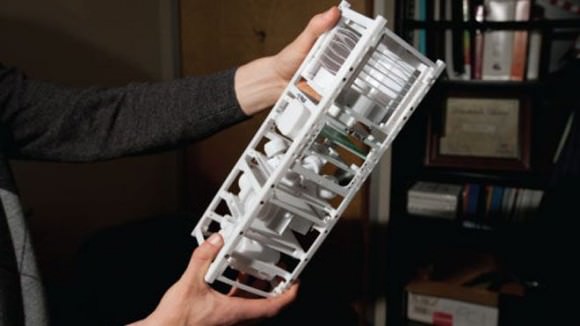
Typically, a primary computer is responsible for delegating tasks to other computers – such as attitude control, calculations for orbital maneuvers, and scheduling tasks. Still, the primary computer may be used for payload-related tasks, like image processing, data analysis, and data compression.
Miniaturized components provide attitude control, usually consisting of reaction wheels, magnetorquers, thrusters, star trackers, Sun and Earth sensors, angular rate sensors, and GPS receivers and antennas. Many of these systems are often used in combination in order to compensate for shortcomings, and to provide levels of redundancy.
Sun and star sensors are used to provide directional pointing, while sensing the Earth and its horizon is essential for conducting Earth and atmospheric studies. Sun sensors are also useful in ensuring that the CubsSat is able to maximize its access to solar energy, which is the primary means of powering a CubeSat – where solar panels are incorporated into the satellites outer casing.
Meanwhile, propulsion can come in a number of forms, all of which involve miniaturized thrusters providing small amounts of specific impulse. Satellites are also subject to radiative heating from the Sun, Earth, and reflected sunlight, not to mention the heat generated by their components.
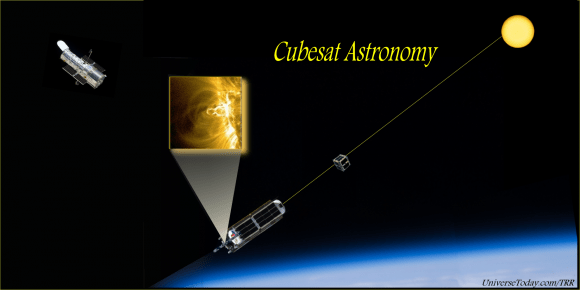
As such, CubeSat’s also come with insulation layers and heaters to ensure that their components do not exceed their temperature ranges, and that excess heat can be dissipated. Temperature sensors are often included to monitor for dangerous temperature increases or drops.
For communications, CubeSat’s can rely on antennae that work in the VHF, UHF, or L-, S-, C- and X-bands. These are mostly limited to 2W of power due to the CubeSat’s small size and limited capacity. They can be helical, dipole, or monodirection monopole antennas, though more sophisticated models are being developed.
Propulsion:
CubeSats rely on many different methods of propulsion, which has in turn led to advancements in many technologies. The most common methods includes cold gas, chemical, electrical propulsion, and solar sails. A cold gas thruster relies on inert gas (like nitrogen) which is stored in a tank and released through a nozzle to generate thrust.
As propulsion methods go, it is the simplest and most useful system a CubeSat can use. It is also one of the safest too, since most cold gases are neither volatile nor corrosive. However, they have limited performance and cannot achieve high impulse maneuvers. Hence why they are generally used in attitude control systems, and not as main thrusters.
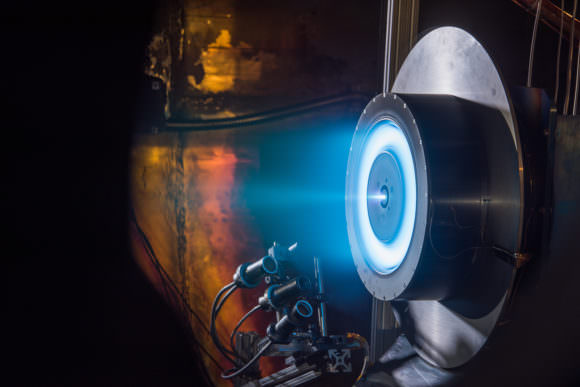
Chemical propulsion systems rely on chemical reactions to produce high-pressure, high-temperature gas which is then directed through a nozzle to create thrust. They can be liquid, solid, or a hybrid, and usually come down to the combination of chemicals combined with a catalysts or an oxidizer. These thrusters are simple (and can therefore be miniaturized easily), have low power requirements, and are very reliable.
Electric propulsion relies on electrical energy to accelerate charged particles to high speeds – aka. Hall-effect thrusters, ion thrusters, pulsed plasma thrusters, etc. This method is beneficial since it combines high specific-impulse with high-efficiency, and the components can be easily miniaturized. A disadvantage is that they require additional power, which means either larger solar cells, larger batteries, and more complex power systems.
Solar sails are also used as a method for propulsion, which is beneficial because it requires no propellant. Solar sails can also be scaled to the CubSat’s own dimensions, and the satellite’s small mass results in the greater acceleration for a given solar sail’s area.
However, solar sails still need to be quite large compared to the satellite, which makes mechanical complexity an added source of potential failure. At this time, few CubeSats have employed a solar sail, but it remains an area of potential development since it is the only method that needs no propellant or involves hazardous materials.
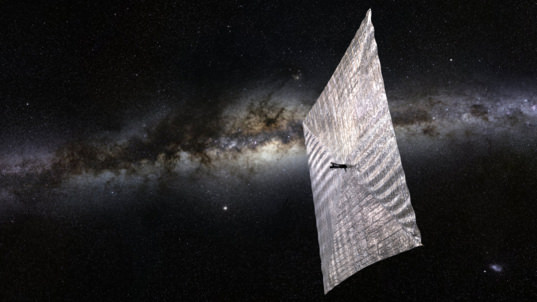
Because the thrusters are miniaturized, they create several technical challenges and limitations. For instance, thrust vectoring (i.e. gimbals) is impossible with smaller thrusters. As such, vectoring must instead be achieved by using multiple nozzles to thrust asymmetrically or using actuated components to change the center of mass relative to the CubeSat’s geometry.
History:
Beginning in 1999, California Polytechnic State University and Stanford University developed the CubeSat specifications to help universities worldwide to perform space science and exploration. The term “CubeSat” was coined to denote nano-satellites that adhere to the standards described in the CubeSat design specifications.
These were laid out by aerospace engineering professor Jordi Puig-Suari and Bob Twiggs, from the Department of Aeronautics & Astronautics at Stanford University. It has since grown to become an international partnership of over 40 institutes that are developing nano-satellites containing scientific payloads.
Initially, despite their small size, academic institutions were limited in that they were forced to wait, sometimes years, for a launch opportunity. This was remedied to an extent by the development of the Poly-PicoSatellite Orbital Deployer (otherwise known as the P-POD), by California Polytechnic. P-PODs are mounted to a launch vehicle and carry CubeSats into orbit and deploy them once the proper signal is received from the launch vehicle.
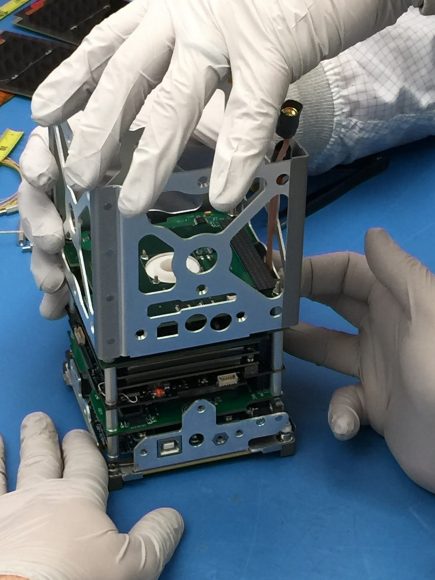
The purpose of this, according to JordiPuig-Suari, was “to reduce the satellite development time to the time frame of a college student’s career and leverage launch opportunities with a large number of satellites.” In short, P-PODs ensure that many CubeSats can be launched at any given time.
Several companies have built CubeSats, including large-satellite-maker Boeing. However, the majority of development comes from academia, with a mixed record of successfully orbited CubeSats and failed missions. Since their inception, CubeSats have been used for countless applications.
For example, they have been used to deploy Automatic Identification Systems (AIS) to monitor marine vessels, deploy Earth remote sensors, to test the long term viability of space tethers, as well as conducting biological and radiological experiments.
Within the academic and scientific community, these results are shared and resources are made available by communicating directly with other developers and attending CubeSat workshops. In addition, the CubeSat program benefits private firms and governments by providing a low-cost way of flying payloads in space.
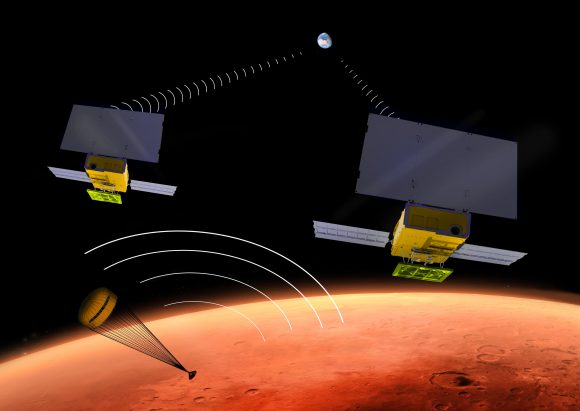
In 2010, NASA created the “CubeSat Launch Initiative“, which aims to provide launch services for educational institutions and non-profit organizations so they can get their CubeSats into space. In 2015, NASA initiated its Cube Quest Challenge as part of their Centennial Challenges Programs.
With a prize purse of $5 million, this incentive-competition aimed to foster the creation of small satellites capable of operating beyond low Earth orbit – specifically in lunar orbit or deep space. At the end of the competition, up to three teams will be selected to launch their CubeSat design aboard the SLS-EM1 mission in 2018.
NASA’s InSight lander mission (scheduled to launch in 2018), will also include two CubeSats. These will conduct a flyby of Mars and provide additional relay communications to Earth during the lander’s entry and landing.
Designated Mars Cube One (MarCO), this experimental 6U-sized CubeSat will will be the first deep-space mission to rely on CubeSat technology. It will use a high-gain, flat-paneled X-band antenna to transmit data to NASA’s Mars Reconnaissance Orbiter (MRO) – which will then relay it to Earth.
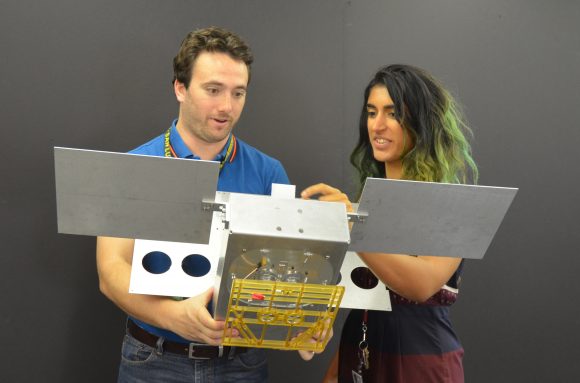
Making space systems smaller and more affordable is one of the hallmarks of the era of renewed space exploration. It’s also one of the main reasons the NewSpace industry has been growing by leaps and bounds in recent years. And with greater levels of participation, we are seeing greater returns when it comes to research, development and exploration.
We have written many articles about CubeSat for Universe Today. Here’s Planetary Society to Launch Three Separate Solar Sails, First Interplanetary CubeSats to Launch on NASA’s 2016 InSight Mars Lander, Making CubeSats do Astronomy, What Can You Do With a Cubesat?, These Cubesats Could Use Plasma Thrusters to Leave Our Solar System.
If you’d like more info on the CubeSat, check out CubeSat’s official homepage.
We’ve recorded an episode of Astronomy Cast all about the Space Shuttle. Listen here, Episode 127: The US Space Shuttle.
Sources:
Sentinel-1A Satellite Takes A Direct Hit From Millimetre Size Particle
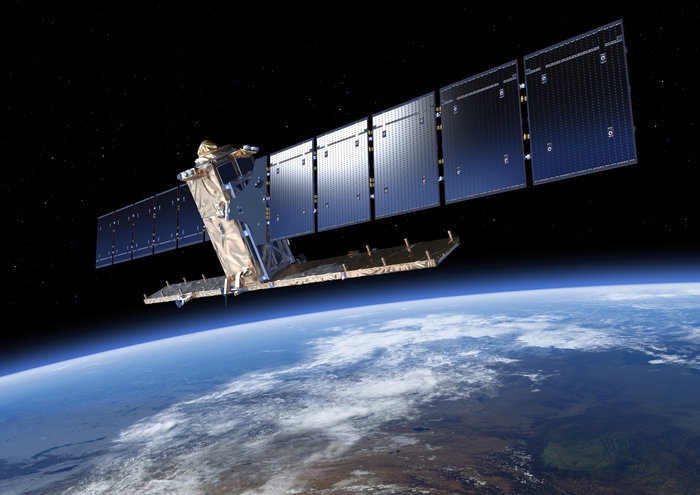
One of the worst things that can happen during an orbital mission is an impact. Near-Earth orbit is literally filled with debris and particulate matter that moves at very high speeds. At worst, a collision with even the smallest object can have catastrophic consequences. At best, it can delay a mission as technicians on the ground try to determine the damage and correct for it.
This was the case when, on August 23rd, the European Space Agency’s Sentinel-1A satellite was hit by a particle while it orbited the Earth. And after several days of reviewing the data from on-board cameras, ground controllers have determined what the culprit was, identified the affected area, and concluded that it has not interrupted the satellite’s operations.
The Sentinel-1A mission was the first satellite to be launched as part of the ESA’s Copernicus program – which is the worlds largest single earth observation program to date. Since it was deployed in 2014, Sentinel-1A has been monitoring Earth using its C-band Synthetic Aperture Radar, which allows for crystal clear images regardless of weather or light conditions.
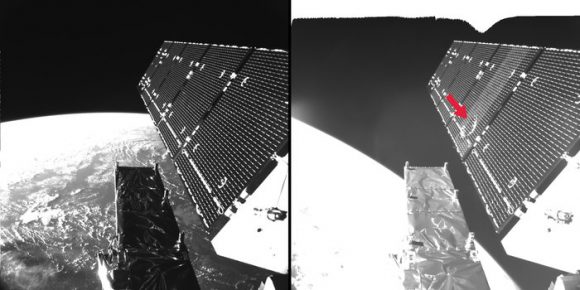
In addition to tracking oil spills and mapping sea ice, the satellite has also been monitoring the movement of land surfaces. Recently, it provided invaluable insight into the earthquake in Italy that claimed at least 290 lives and caused widespread damage. These images were used by emergency aid organizations to assist in evacuations, and scientists have begun to analyze them for indications of how the quake occurred.
The first indication that something was wrong came on Tuesday, August 23rd, at 17:07 GMT (10:07 PDT, 13:07 EDT), when controllers noted a small power reduction. At the time, the satellite was at an altitude of 700 km, and slight changes in it’s orientation and orbit were also noticed.
After conducting a preliminary investigation, the operations team at the ESA’s control center hypothesized that the satellite’s solar wing had suffered from an impact with a tiny object. After reviewing footage from the on-board cameras, they spotted a 40 cm hole in one of the solar panels, which was consistent with the impact of a fragment measuring less than 5 mm in size.
However, the power loss was not sufficient to interrupt operations, and the ESA was quick to allay fears that this would result in any interruptions of the Sentinel-1A‘s mission. They also indicated that the object’s small size prevented them from advanced warning.
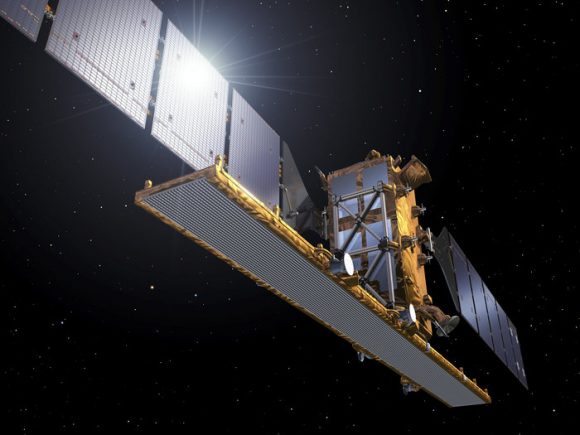
As Holger Krag – Head of the Space Debris Office at ESA’s establishment in Darmstadt, Germany – said in an agency press release:
“Such hits, caused by particles of millimeter size, are not unexpected. These very small objects are not trackable from the ground, because only objects greater than about 5 cm can usually be tracked and, thus, avoided by maneuvering the satellites. In this case, assuming the change in attitude and the orbit of the satellite at impact, the typical speed of such a fragment, plus additional parameters, our first estimates indicate that the size of the particle was of a few millimeters.
While it is not clear if the object came from a spent rocket or dead satellite, or was merely a tiny clump of rock, Krag indicated that they are determined to find out. “Analysis continues to obtain indications on whether the origin of the object was natural or man-made,” he said. “The pictures of the affected area show a diameter of roughly 40 cm created on the solar array structure, confirming an impact from the back side, as suggested by the satellite’s attitude rate readings.”
In the meantime, the ESA expects that Sentinel-1A will be back online shortly and doing the job for which it was intended. Beyond monitoring land movements, land use, and oil spills, Sentinel-1A also provides up-to-date information in order to help relief workers around the world respond to natural disasters and humanitarian crises.
The Sentinel-1 satellites, part of the European Union’s Copernicus Program, are operated by ESA on behalf of the European Commission.
Further Reading: Sentinel-1
DSCOVR Captures EPIC Views of the March 2016 Eclipse

On March 8, 2016 (March 9 local time) the Moon briefly blocked the light from the Sun in what was the only total solar eclipse of the year. The event was visible across portions of southeast Asia, Indonesia, and Micronesia, and was observed by both skywatchers on the ground in person and those watching live online around the world. While to most the view was of a silhouetted Moon slowly carving away the disk of the Sun before totality revealed a shimmering corona, the view from space looking back at Earth showed the Moon’s dark shadow passing over islands, clouds, and sea.
Continue reading “DSCOVR Captures EPIC Views of the March 2016 Eclipse”


